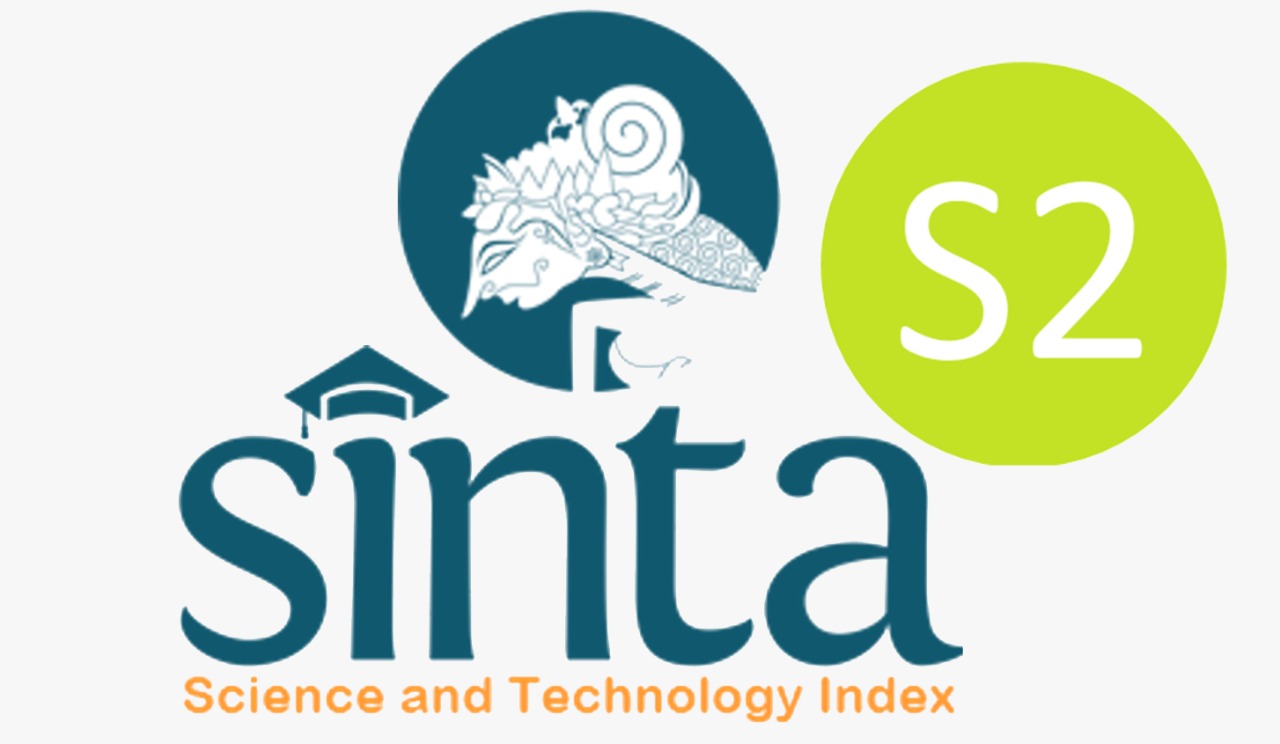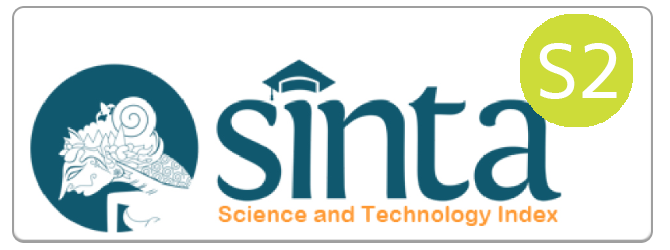DIGITAL BANKING ADOPTION, BANK SIZE, AND BANK PERFORMANCE IN INDONESIA
Downloads
Introduction: The adoption of technology has become prevalent in the banking sector. This research investigates the potential correlation between the implementation of digital banking adoption and the bank performance (Return on Assets and Operational Efficiency Rasio), while considering the factor of bank size.
Methods: This research utilizes panel data regression to assess the effect of digital banking adoption on the performance of banking firms. Additionally, it explores whether the bank size influences the strength of the relationship between the independent and dependent variables.
Results: Digital banking adoption (DBA) has a significant negative impacts Return on Assets (ROA) and has a significant positive effect on the Operational Efficiency Ratio (BOPO). The bank size weakens the negative impact of DBA on ROA; the bank size also weakens the positive impact of DBA on BOPO.
Conclusion and suggestion: This study demonstrates the occurrence of the profitability paradox and economies of scale in Indonesian banking companies. For decision-makers in banking companies, these findings can be considered when determining the optimal company size to enhance digital banking adoption and improve banking performance.
Abusharbeh, M. T. (2023). Technology-Profitability Paradox in Banking Sector: Evidence from Palestine. Journal of the Knowledge Economy, 1-19.
Arora, H., & Arora, P. (2013). Effect of investments in information technology on bank performance: empirical evidence from Indian public sector banks. International Journal of Business Information Systems, 13(4), 400-417.
Beccalli, E. (2007). Does IT investment improve bank performance? Evidence from Europe. Journal of banking & finance, 31(7), 2205-2230.
Blatter, M., & Fuster, A. (2022). Scale effects on efficiency and profitability in the Swiss banking sector. Swiss Journal of Economics and Statistics, 158(1), 12.
Brindley, B. (2008). A dictionary of finance and banking. Oxford University Press, USA.
Brynjolfsson, E. (1993). The productivity paradox of information technology. Communications of the ACM, 36(12), 66-77.
Chhaidar, A., Abdelhedi, M., & Abdelkafi, I. (2023). The effect of financial technology investment level on European banks’ profitability. Journal of the Knowledge Economy, 14(3), 2959-2981.
Cochran, W. G. (1977). Sampling techniques. John Wiley & sons.
Dadoukis, A., Fiaschetti, M., & Fusi, G. (2021). IT adoption and bank performance during the Covid-19 pandemic. Economics Letters, 204, 109904.
Damodar N, G. (2004). Basic econometrics.
Demirgüç-Kunt, A., Klapper, L., Singer, D., & Ansar, S. (2022). The Global Findex Database 2021: Financial inclusion, digital payments, and resilience in the age of COVID-19. World Bank Publications.
Dong, J., Yin, L., Liu, X., Hu, M., Li, X., & Liu, L. (2020). Impact of internet finance on the performance of commercial banks in China. International Review of Financial Analysis, 72, 101579.
Gunawan, H., & Serlyna, S. (2018). Impact of information technology investment to financial performance on banking sector. Journal of Applied Managerial Accounting, 2(1), 41-46.
Gupta, S. D., Raychaudhuri, A., & Haldar, S. K. (2018). Information technology and profitability: evidence from Indian banking sector. International Journal of Emerging Markets, 13(5), 1070-1087.
Hughes, J. P., Jagtiani, J., Mester, L. J., & Moon, C. G. (2019). Does scale matter in community bank performance? Evidence obtained by applying several new measures of performance. Journal of Banking & Finance, 106, 471-499.
Huong, Lan Nguyen-Thi., Viet, Hung Nguyen., and Phuong, Anh Nguyen. (2023). How does digital transformation impact bank performance?. Taylor & Francis. Cogent Economics & Finance. DOI:10.1080/23322039.2023.2217582
Jalal-Karim, A., & Hamdan, A. M. (2010). The impact of information technology on improving banking performance matrix: Jordanian banks as case study. In European Mediterranean and Middle Eastern Conference on Information System (pp. 21-33).
Le, T. D., & Ngo, T. (2020). The determinants of bank profitability: A cross-country analysis. Central Bank Review, 20(2), 65-73.
Mankiw, N. G. (2013). Pengantar Ekonomi Makro. Jakarta: Penerbit Salemba Empat.
Moharana, S., Panda, P., & Guru, S. (2023). Does Size Influence Firm Performance? An Impact Assessment on Select Indian Banks. IITM Journal of Business Studies, 11(1), 119-134.
Muawanah, U. (2020). Information technology adoption, corporate governance, and bank performance. e-Repository Dosen Universitas Gajayana Malang.
Newman, D. A. (2014). Missing data: Five practical guidelines. Organizational Research Methods, 17(4), 372-411.
Nguyen-Thi-Huong, L., Nguyen-Viet, H., Nguyen-Phuong, A., & Van Nguyen, D. (2023a). How does digital transformation impact bank performance?. Cogent Economics & Finance, 11(1), 2217582.
Nguyen, Q. T. T., Ho, L. T. H., & Nguyen, D. T. (2023b). Digitalization and bank profitability: evidence from an emerging country. International Journal of Bank Marketing, 41(7), 1847-1871.
Otieno, O. S., & Ndede, F. W. (2020). Adoption of digital banking technology and financial performance of commercial banks in Kenya. International Journal of Current Aspects in Finance, Banking and Accounting, 2(1), 42-50.
Polák, P. (2017). The productivity paradox: A meta-analysis. Information Economics and Policy, 38, 38-54.
Roy, N. C., & Thangaraj, V. (2020, November). Investment in technology: does it proliferate the profitability and performance of the Indian banks?. In Financial Issues in Emerging Economies: Special Issue Including Selected Papers from II International Conference on Economics and Finance, 2019, Bengaluru, India (Vol. 36, pp. 19-44). Emerald Publishing Limited.
Scott, S. V., Van Reenen, J., & Zachariadis, M. (2017). The long-term effect of digital innovation on bank performance: An empirical study of SWIFT adoption in financial services. Research Policy, 46(5), 984-1004.
Staikouras, C. K., & Wood, G. E. (2004). The determinants of European bank profitability. International Business & Economics Research Journal (IBER), 3(6).
Sugiyono. (2013). Metode Penelitian Kuantitatif, Kualitatif, dan R &. D. Penerbit Alfabeta. Bandung.
Terraza, V. (2015). The effect of bank size on risk ratios: Implications of banks’ performance. Procedia Economics and Finance, 30, 903-909.
Wirdiyanti, Rosnita. (2018). Digital banking technology adoption and bank efficiency: the Indonesian case. Jurnal Otoritas Jasa Keuangan. Halaman 1-34.
William, G. Z. (2013). Business Research Methods. Cengage Learning.
Xiang, X., & Jiang, L. (2023). Digitalisation and commercial bank performance: A test of heterogeneity from Chinese commercial banks. Finance Research Letters, 58, 104303.
Yudaruddin, R. (2023). Financial technology and performance in Islamic and conventional banks. Journal of Islamic Accounting and Business Research, 14(1), 100-116.
Zhao, S., & Jian, J. (2013). Size does matter for profitability! Testing economies of scale in Chinese banking industry. Journal of Applied Sciences, 13(17), 3510-3515.
Zikmund, W. G. (2013). Business research methods. (t.t).
Copyright (c) 2024 Rahmat Setiawan, Leonardus Prakoso

This work is licensed under a Creative Commons Attribution-ShareAlike 4.0 International License.
Authors who publish with Jurnal Ekonomi dan Bisnis Airlangga agree to the following terms:The journal allows the author to hold the copyright of the article without restrictions.
The journal allows the author(s) to retain publishing rights without restrictions
The legal formal aspect of journal publication accessibility refers to Creative Commons Attribution Share-Alike (CC BY-SA).
Jurnal Ekonomi dan Bisnis Airlangga (JEBA) is licensed under a Creative Commons Attribution-ShareAlike 4.0 International License

















